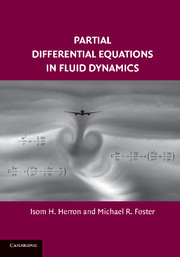Book contents
- Frontmatter
- Contents
- Preface
- Acknowledgments
- 1 Review of Analytic Function Theory
- 2 Special Functions
- 3 Eigenvalue Problems and Eigenfunction Expansions
- 4 Green's Functions for Boundary-Value Problems
- 5 Laplace Transform Methods
- 6 Fourier Transform Methods
- 7 Particular Physical Problems
- 8 Asymptotic Expansions of Integrals
- Index
Preface
Published online by Cambridge University Press: 06 July 2010
- Frontmatter
- Contents
- Preface
- Acknowledgments
- 1 Review of Analytic Function Theory
- 2 Special Functions
- 3 Eigenvalue Problems and Eigenfunction Expansions
- 4 Green's Functions for Boundary-Value Problems
- 5 Laplace Transform Methods
- 6 Fourier Transform Methods
- 7 Particular Physical Problems
- 8 Asymptotic Expansions of Integrals
- Index
Summary
In this book, it is our intent to equip graduate students in applied mathematics and engineering with a range of classical analytical methods for the solution of partial differential equations. In our research specialties, numerical methods, on the one hand, and perturbation and variational methods, on the other, constitute contemporary tools that are explicitly not covered in this book, since there are significant books that are devoted to those topics specifically.
This book grew not from the authors' desire to write a textbook but rather from many years for each of us in compiling notes to be distributed to our graduate students in courses devoted to the solution of partial differential equations. One of us taught mostly engineers (MRF at The Ohio State University), and the other (IH at Howard University and later at Rensselaer Polytechnic Institute) mostly mathematicians. It surprised us to learn, on becoming re–acquainted at RPI, how similar are our perspectives about this material, and in particular the level of rigor with which it ought to be presented. Further, both of us wanted to create a book that would include many of the techniques that we have learned one way or another but are quite simply not in books.
The topics chosen for the book are those that we have found to be of considerable use in our own research careers. These are topics that are applicable in many areas, such as aeronautics and astronautics; biomechanics; chemical, civil, and mechanical engineering fluid mechanics; and geophysical flows.
- Type
- Chapter
- Information
- Partial Differential Equations in Fluid Dynamics , pp. xi - xiiPublisher: Cambridge University PressPrint publication year: 2008



